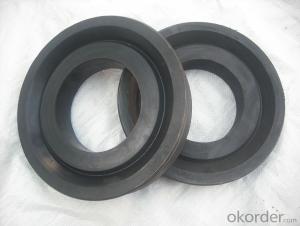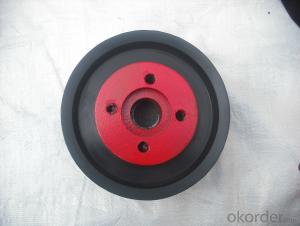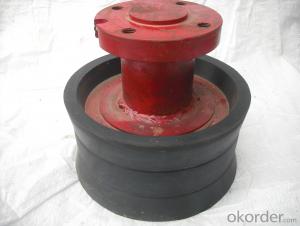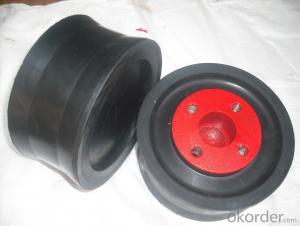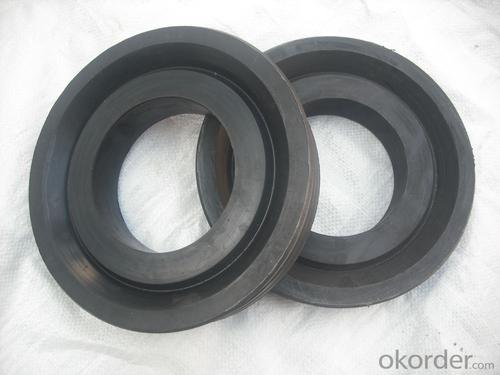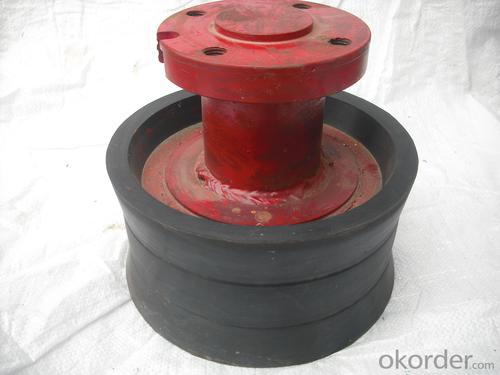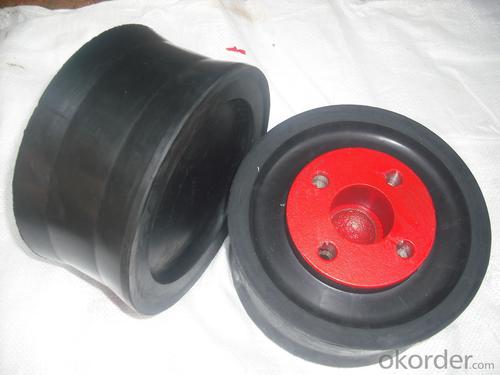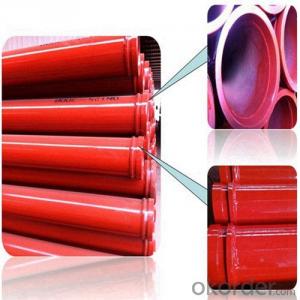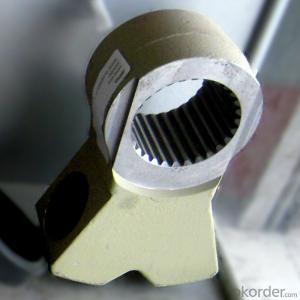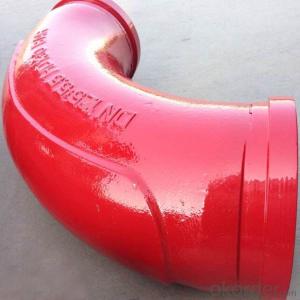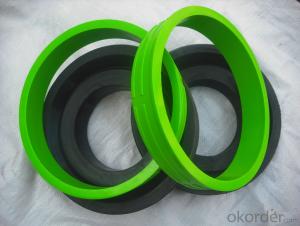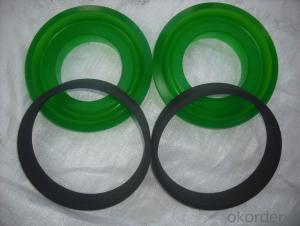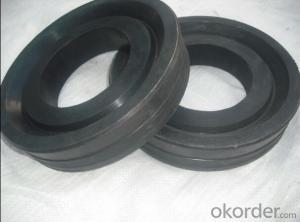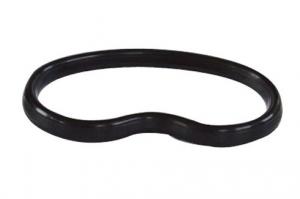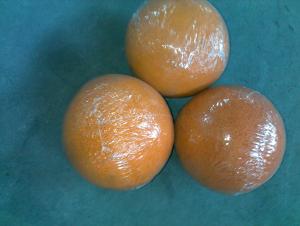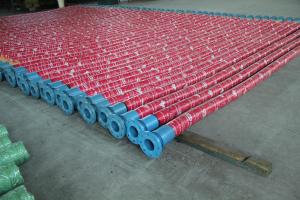ZOOMLION RUBBER PISTON WITH FIBER DN200 WITH HIGH QUALITY
- Loading Port:
- Tianjin
- Payment Terms:
- TT OR LC
- Min Order Qty:
- 3 set
- Supply Capability:
- 500 set/month
OKorder Service Pledge
OKorder Financial Service
You Might Also Like
ZOOMLION RUBBER PISTON WITH FIBER DN200
Schwing/ Sany/PM/Zoomlion concrete pump rubber piston
name | Concrete pump piston |
size | DN200 for Schwing DN230 for Schwing DN200 for PM entirety piston DN230 for PM entirety piston DN180 for Zoomlion piston DN200 for Zoomlion piston DN220 for Zoomlion piston DN230 for Zoomlion piston DN180 for Sany piston DN195 for Sany piston DN200 for Sany piston DN230 for Sany piston DN260 for Sany piston DN280 for Sany piston Other sizes and types upon request |
Material | PUR Polyurethane,natural rubber |
Applacation | Used in concrete pump truck,concrete pump,Hydrulic ram system in Construction work equipment
|
Serving brands of mounted truck concrete pump and concrete pump | Sany ,PM, Zoomlion,Schwing,CIFA and so on |
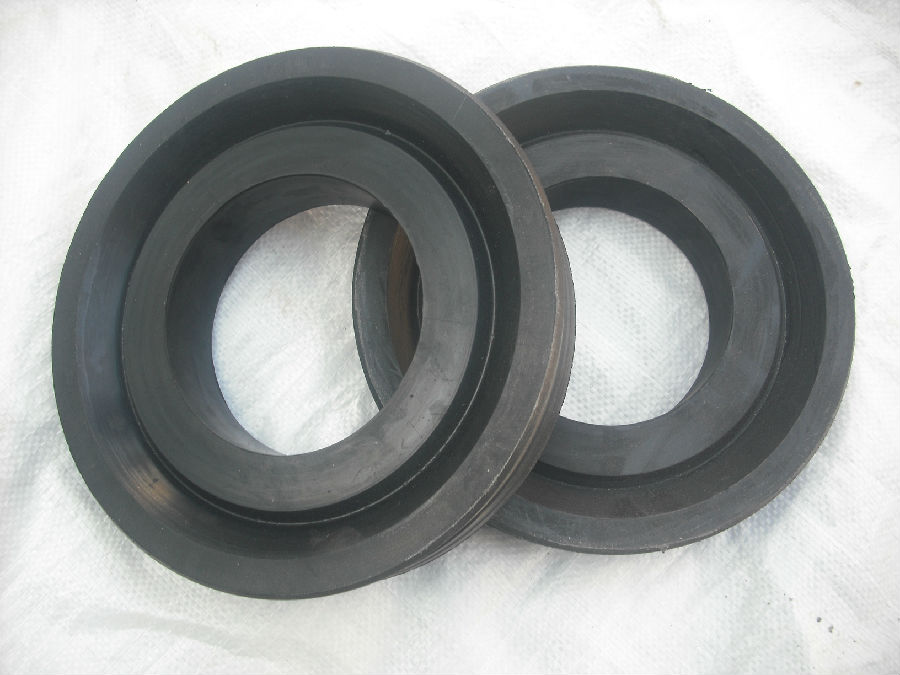
- Q: How can a faulty filter affect the pumping process?
- The pumping process can be significantly affected by a faulty filter in various ways. To begin with, the flow of fluid through the pump may be hindered if the filter becomes clogged or blocked. This can lead to reduced efficiency and increased energy consumption as the pump must exert more effort to overcome the resistance caused by the obstructed filter. Additionally, the decreased flow rate can result in longer pumping times, which can be problematic in time-sensitive applications. Moreover, a faulty filter may not effectively eliminate impurities or contaminants from the fluid being pumped. This can be particularly troublesome in industries where maintaining the purity or cleanliness of the fluid is crucial, such as in pharmaceutical or food processing applications. The presence of contaminants can jeopardize the quality of the final product or cause damage to equipment downstream from the pump. Furthermore, increased maintenance and repair costs can be a consequence of a faulty filter. If the filter is not functioning properly, it may allow larger particles or debris to pass through, which can cause damage to the pump components. This can result in heightened wear and tear, a shorter lifespan for the pump, and the need for more frequent repairs or replacements. Finally, a faulty filter can pose a risk to the overall system and its components. Complete failure of the filter can allow foreign objects or particles to enter the pump, potentially leading to blockages, damage to internal components, or even total pump failure. This can result in costly downtime, loss of production, and the need for emergency repairs or replacements. In conclusion, a faulty filter can have negative effects on the pumping process, including decreased efficiency, compromised fluid quality, increased maintenance costs, and potential damage to the pump and system components. Regular inspection, maintenance, and timely replacement of filters are crucial to ensure smooth and reliable operation of pumps in various industries.
- Q: Can I get spare parts for concrete pump hydraulic cylinders and valves?
- Yes, you can definitely get spare parts for concrete pump hydraulic cylinders and valves. There are numerous companies and suppliers that specialize in providing spare parts for construction equipment, including hydraulic cylinders and valves for concrete pumps. These spare parts can be easily sourced online or through local distributors. It is important to ensure that you provide accurate information about the make and model of your concrete pump to ensure compatibility and proper functioning of the spare parts. Additionally, it is advisable to choose reputable suppliers who offer high-quality, genuine spare parts to guarantee optimal performance and durability.
- Q: How often should concrete pump pressure gauges be inspected and replaced?
- Concrete pump pressure gauges should be inspected and replaced on a regular basis, ideally every six months or as recommended by the manufacturer. Regular inspections help ensure accurate pressure readings and prevent potential accidents or malfunctions due to faulty gauges.
- Q: How to operate the concrete pump?
- The size of sand and gravel, cement mark and mixture ratio should meet the requirement of the mechanical performance of the pump according to the specifications of the factory
- Q: What are the different types of concrete pump hopper agitator blades?
- There are several different types of concrete pump hopper agitator blades that are used in the construction industry. These blades are designed to efficiently mix and agitate the concrete mixture in the hopper, ensuring a consistent and homogeneous mixture before it is pumped onto the project site. 1. Paddle Blades: Paddle blades are the most common type of agitator blades used in concrete pump hoppers. These blades have a flat, paddle-like design that helps to mix the concrete ingredients effectively. They are typically made of high-quality steel or hardened rubber for durability and optimal performance. 2. Helical Blades: Helical blades are spiral-shaped agitator blades that are designed to create a gentle, swirling motion within the hopper. This type of blade is particularly effective in preventing the formation of lumps and ensuring a smooth and well-mixed concrete mixture. 3. Ribbon Blades: Ribbon blades are thin, flat blades that resemble ribbons. They are typically placed vertically in the hopper and rotate along their axis to mix the concrete ingredients thoroughly. Ribbon blades are known for their ability to prevent clogging and improve the overall efficiency of concrete pumping. 4. Fan Blades: Fan blades have a unique fan-shaped design that helps to agitate the concrete mixture by creating a powerful airflow within the hopper. This type of blade is particularly effective in preventing the segregation of concrete ingredients and maintaining a consistent mixture. 5. Tine Blades: Tine blades feature multiple prongs or tines that extend outwards from a central hub. These blades create a more aggressive agitation action, making them suitable for mixing heavier concrete mixes or those that contain large aggregates. The choice of agitator blades depends on various factors, including the type of concrete being used, the desired consistency of the mixture, and the specific requirements of the construction project. It is essential to select the appropriate blade type and ensure regular maintenance to optimize the performance and lifespan of the concrete pump hopper agitator.
- Q: How often should control system sensors be calibrated or replaced?
- Control system sensors should be calibrated or replaced periodically, typically according to the manufacturer's recommendations or industry standards. The frequency of calibration or replacement depends on various factors such as the sensor type, its usage conditions, and the criticality of the measurements. Regular calibration is essential to ensure accurate and reliable readings, while replacement may be necessary if sensors become damaged, worn out, or show signs of malfunctioning. Ultimately, it is crucial to strike a balance between cost-effectiveness and maintaining optimal performance by following a proper maintenance schedule for control system sensors.
- Q: How do I properly adjust and control flow rates in concrete pump spare parts?
- In order to achieve proper adjustment and control of flow rates in concrete pump spare parts, it is important to follow a series of key steps: 1. Get acquainted with the equipment: Take the time to familiarize yourself with the specific concrete pump spare parts you will be working with. Read the user manual and review any documentation provided by the manufacturer. This will give you a comprehensive understanding of the equipment's capabilities and effective methods for adjusting flow rates. 2. Verify the pump settings: Prior to commencing any concrete pumping operation, ensure that the pump settings are correctly configured. This involves checking the hydraulic pressure, engine RPM, and any other relevant settings. Confirm that all valves and controls are in the appropriate position for the desired flow rate. 3. Monitor the pump speed: The speed of the pump directly influences the flow rate of the concrete. Different concrete mixtures may require varying pump speeds in order to achieve the desired flow rate. Adjust the engine RPM accordingly, referring to the manufacturer's recommendations and any specific project requirements. 4. Modify the pump stroke: Many concrete pumps offer adjustable pump strokes to regulate the flow rate. By altering the length of the stroke, you can increase or decrease the volume of concrete being pumped. Experiment with different stroke lengths to determine the optimum flow rate for your particular application. 5. Utilize the control panel: Numerous concrete pumps are equipped with a control panel that allows for precise adjustment of flow rates. Make use of these features to fine-tune the flow rate. Use the control panel to monitor the pump's performance and make any necessary adjustments to maintain a consistent flow. 6. Regularly inspect and maintain the equipment: Proper maintenance is essential to ensure accurate adjustment and control of flow rates. Routinely inspect the concrete pump spare parts for any signs of wear or damage. Clean and lubricate the components as recommended by the manufacturer. A well-maintained pump will operate more efficiently and provide more precise control over flow rates. By adhering to these steps, one can effectively adjust and control flow rates in concrete pump spare parts. Always prioritize safety and consult the manufacturer's instructions and guidelines for specific recommendations and considerations.
- Q: How do I maintain the performance of concrete pump spare parts in extreme weather conditions?
- Maintaining the performance of concrete pump spare parts in extreme weather conditions is crucial to ensure the efficiency and longevity of your equipment. Here are some tips to help you maintain the performance of concrete pump spare parts in extreme weather conditions: 1. Regular inspection: Conduct regular inspections of your concrete pump spare parts to identify any signs of wear and tear. Extreme weather conditions can accelerate the deterioration of parts, so it is important to catch any potential issues early on. 2. Keep parts clean: Extreme weather conditions such as rain, snow, or excessive heat can lead to the accumulation of dirt, debris, or other contaminants on your spare parts. It is essential to clean the parts regularly to prevent any clogging or damage. 3. Proper lubrication: Lubrication is crucial for the smooth functioning of concrete pump spare parts. In extreme weather conditions, it is recommended to use lubricants specifically designed for such conditions. These lubricants should have high viscosity and resistance to temperature fluctuations. 4. Protect from direct exposure: Extreme weather conditions, such as extreme heat or freezing temperatures, can directly impact the performance of concrete pump spare parts. It is essential to protect the parts from direct exposure to these conditions by utilizing covers or enclosures. 5. Store spare parts correctly: When not in use, spare parts should be stored in a dry and temperature-controlled environment. Extreme weather conditions can cause parts to expand or contract, leading to potential damage. Storing spare parts in a controlled environment will help maintain their integrity and performance. 6. Timely replacement: Constant monitoring and timely replacement of worn-out parts are crucial to maintaining the performance of concrete pump spare parts. Extreme weather conditions can accelerate the wear and tear process, so it is important to have a proactive approach towards replacement. 7. Consult the manufacturer: If you are unsure about the specific requirements for maintaining concrete pump spare parts in extreme weather conditions, it is always best to consult the manufacturer. They can provide you with expert advice and guidance on how to ensure optimal performance in such conditions. By following these tips, you can effectively maintain the performance of concrete pump spare parts in extreme weather conditions, ensuring the smooth and efficient operation of your equipment.
- Q: Can I get spare parts for concrete pump accessories like remote control systems?
- Certainly, spare parts for concrete pump accessories like remote control systems can be obtained. A variety of spare parts for these products are offered by numerous manufacturers and suppliers of concrete pump accessories. These spare parts encompass various components for remote control systems, including buttons, switches, sensors, batteries, and transmitters. To ensure the availability of spare parts for your particular model of remote control system, it is advisable to directly contact the manufacturer or supplier. They will be equipped to furnish you with the essential information and aid you in procuring the necessary spare parts.
- Q: What is the function of a concrete pump remote control antenna?
- The function of a concrete pump remote control antenna is to wirelessly transmit signals from the remote control device to the concrete pump, allowing the operator to control the pump's functions from a distance.
Send your message to us
ZOOMLION RUBBER PISTON WITH FIBER DN200 WITH HIGH QUALITY
- Loading Port:
- Tianjin
- Payment Terms:
- TT OR LC
- Min Order Qty:
- 3 set
- Supply Capability:
- 500 set/month
OKorder Service Pledge
OKorder Financial Service
Similar products
Hot products
Hot Searches
Related keywords
